Inframammary Fold
This is the lower margin of where breast and chest meet. Called by various names, inframammary fold (IMF), inframammary crease, inframammary ligament and inframammary line, this is the reflection point where the skin of the lower surface of the breast turns down over the chest beneath (distal to) the breast. It is an important landmark for the surgeon practising breast reconstruction in particular, but requires also the attention of the surgeon in breast augmentation.
Anatomic dissection and histologic microscopy studies have shown this to be a recognizable structure where the subcutaneous fascia of the breast is adherent and comingles with the fibers of the deep pectoral fascia, identifying this as a fixed zone which mandates the attention of the breast surgeon.
The suggestion has been made that there is a “ligament” in this fold, and that has not been substantiated.
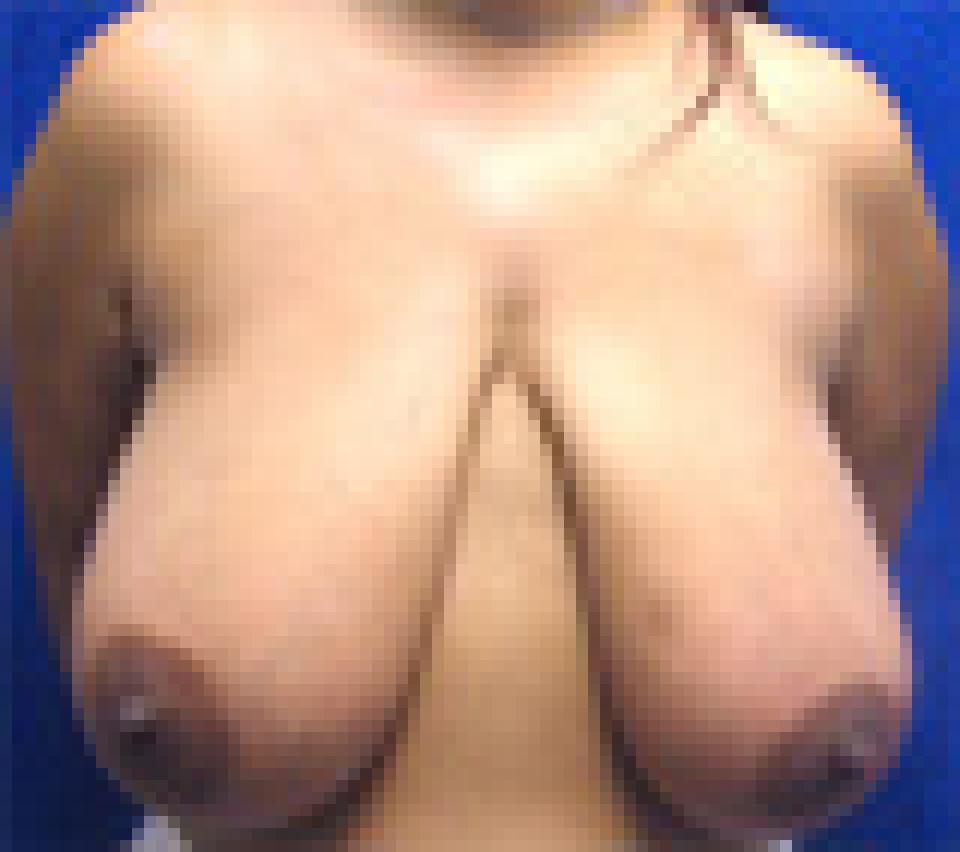 before
before
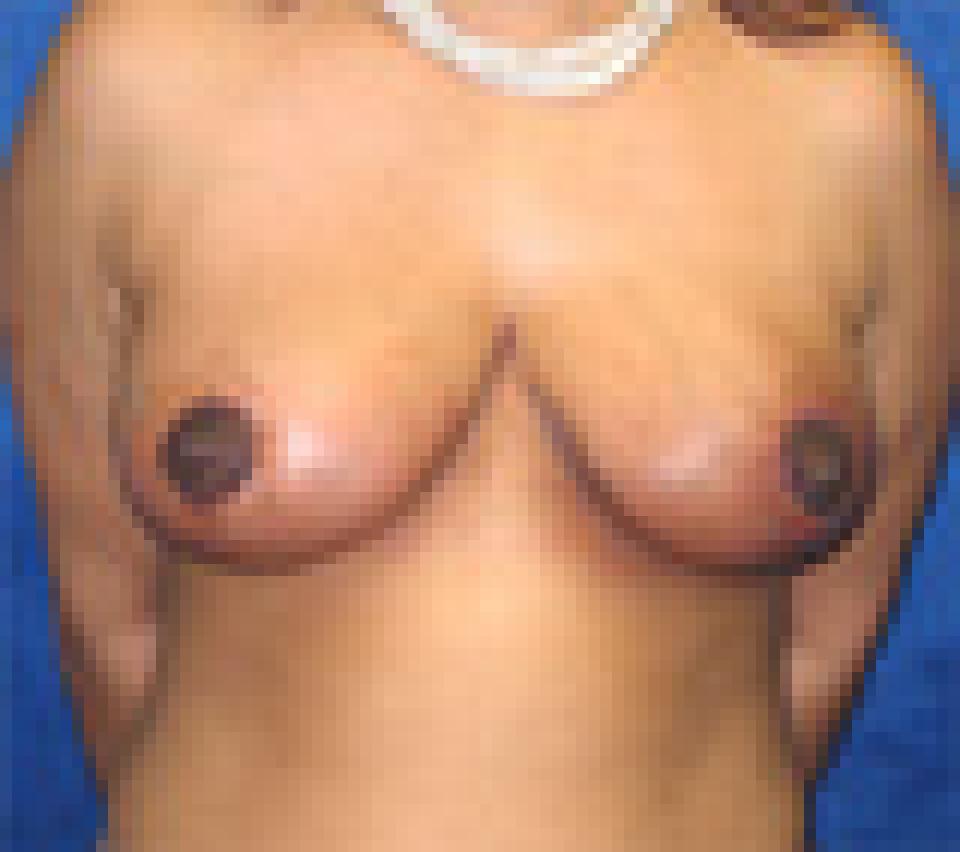 after
after
This case depicts a 29 year old woman with symptomatic breast hypertrophy who underwent a breast reduction using the inverted T or "anchor" incision pattern. Because of this individual's symptoms, medical insurance covered a portion of the costs of this procedure.
Not only did her symptoms improve following surgery, but she also gained a more aesthetically proportionate breast. Her post-operative photographs show her appearance approximately one month after surgery.
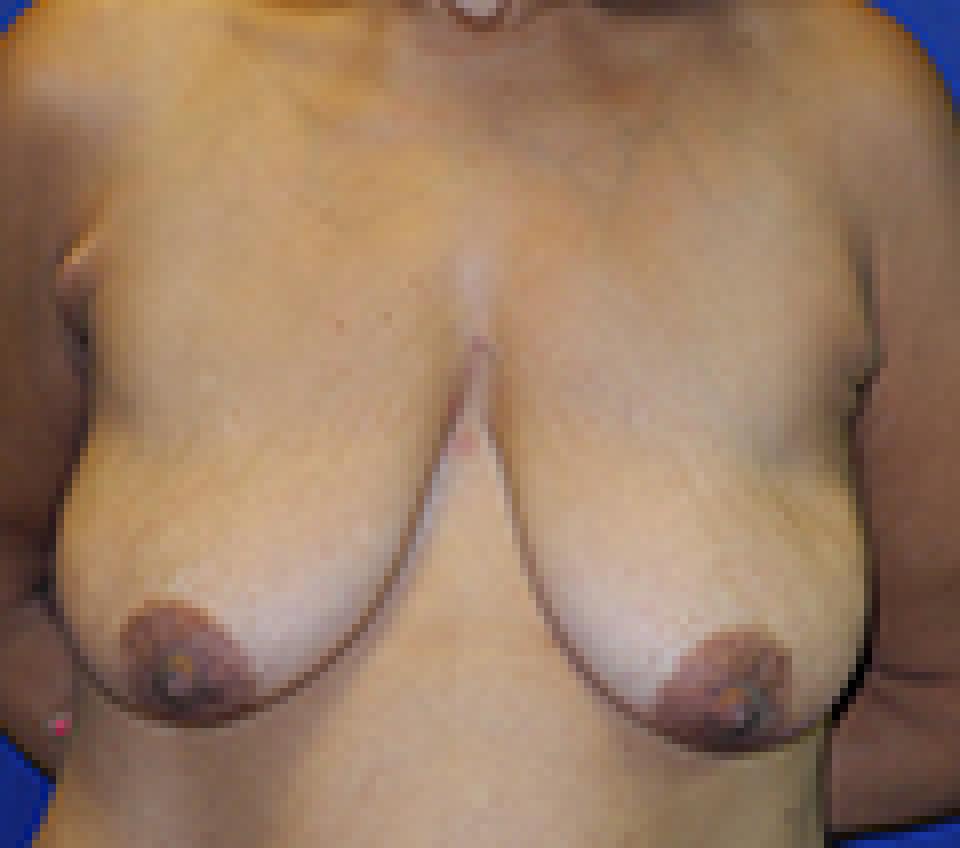 before
before
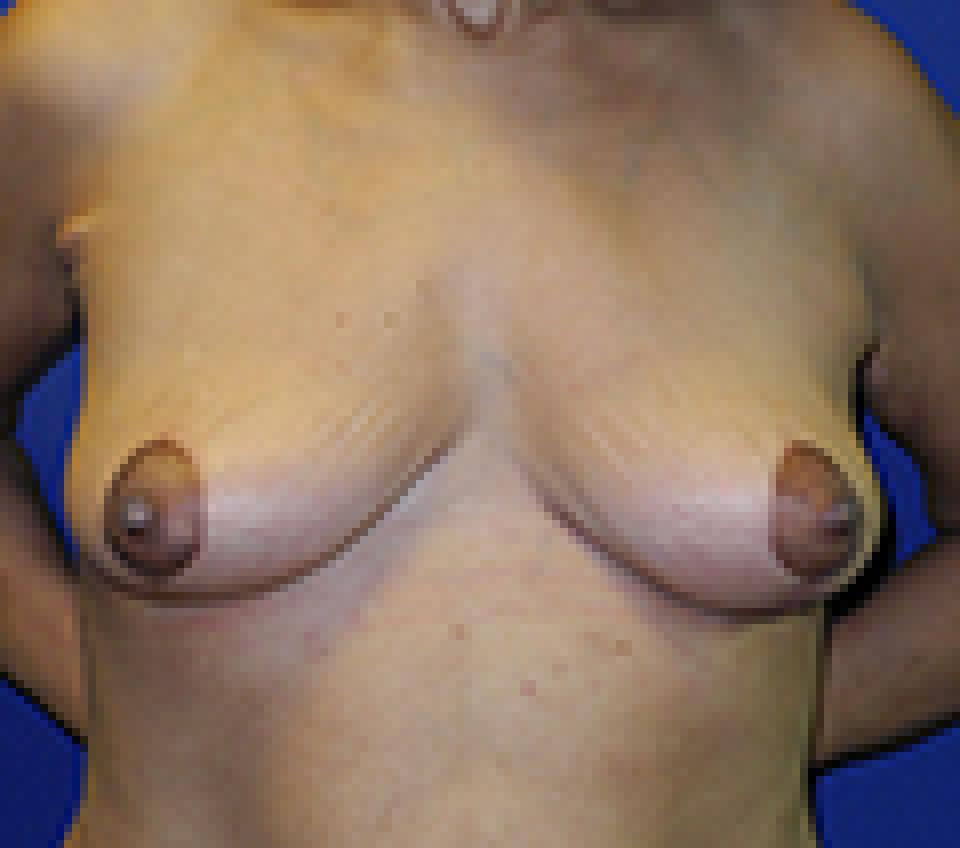 after
after
This 49 year old woman reached her plateau weight after losing 100 pounds following bariatric surgery. She is an excellent example of an individual whose breast tissue had been largely replaced with fat and as such, after massive weight loss, there was not enough breast tissue remaining to rearrange into a new breast shape that appeared typical of what one might expect after a breast lift or mastopexy.
From an aesthetic standpoint, this woman informed me that she would be satisfied with any improvement in her breast shape. Her primary goal, however, was to remove the extra skin that otherwise laid across her abdomen unless she wore an underwire bra. Her skin had lost a great deal of its elasticity and was unlikely to tolerate insertion of an implant to replace lost volume without sagging or becoming ptotic in a relatively short period of time. The use of commercially available skin substitutes, which would have allowed use of an implant, was not an option for her.
Her post surgical photographs show her result after I performed a breast lift or mastopexy using a short scar technique that leaves behind scars in the shape of a “lollipop.”
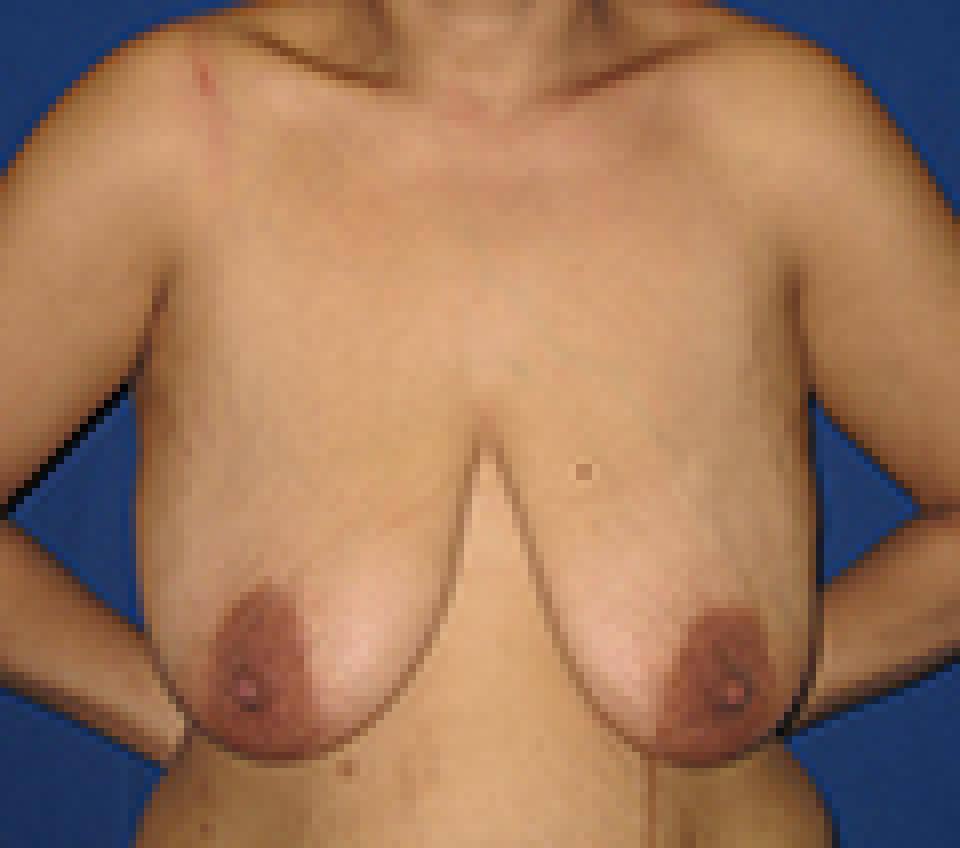 before
before
 after
after
This 26 year old woman reached her plateau weight after losing 74 pounds following bariatric surgery. She had a breast lift or mastopexy using a technique which leaves behind scars in the shape of an “anchor.”
In some patients who lose a large amount of weight, the natural end point of the breast laterally disappears and the breast appears to continue around towards the back. This is what has happened to this woman.
In selected individuals who have this problem, the “anchor” scar type breast lift can be amended to remove that skin excess on the side of the body beneath the arm. This is the reason that I selected that particular breast lift technique in this woman even though the scars that it leaves behind are longer and more difficult to conceal in a swimsuit.
Looking at her photographs after surgery, it is obvious that there is no longer a "wing" of skin that continues laterally towards the back. Instead, the breast has a round shape and ends as it typically does before the side of the body that lies beneath the arm.
Unfortunately, there is now a visible scar there. This is an example of what I refer to as a “trade off” in plastic surgery. It is important to decide what is more important to each individual patient- a scar or better contour. Sometimes, it is not possible to have both!
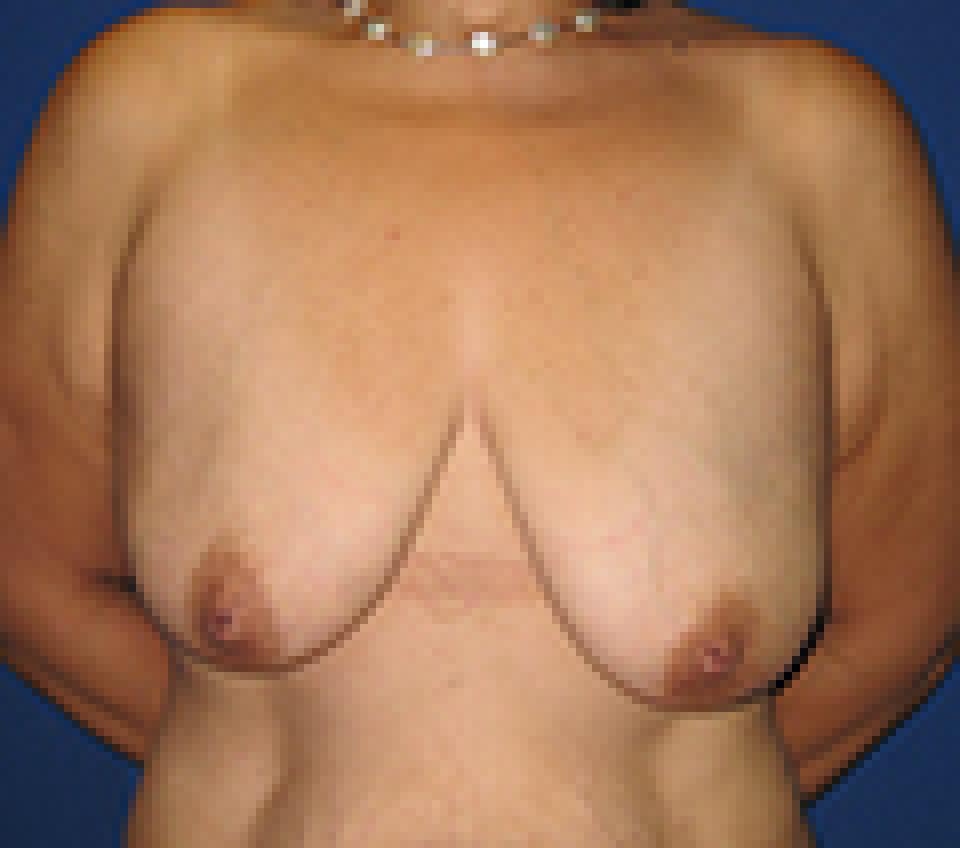 before
before
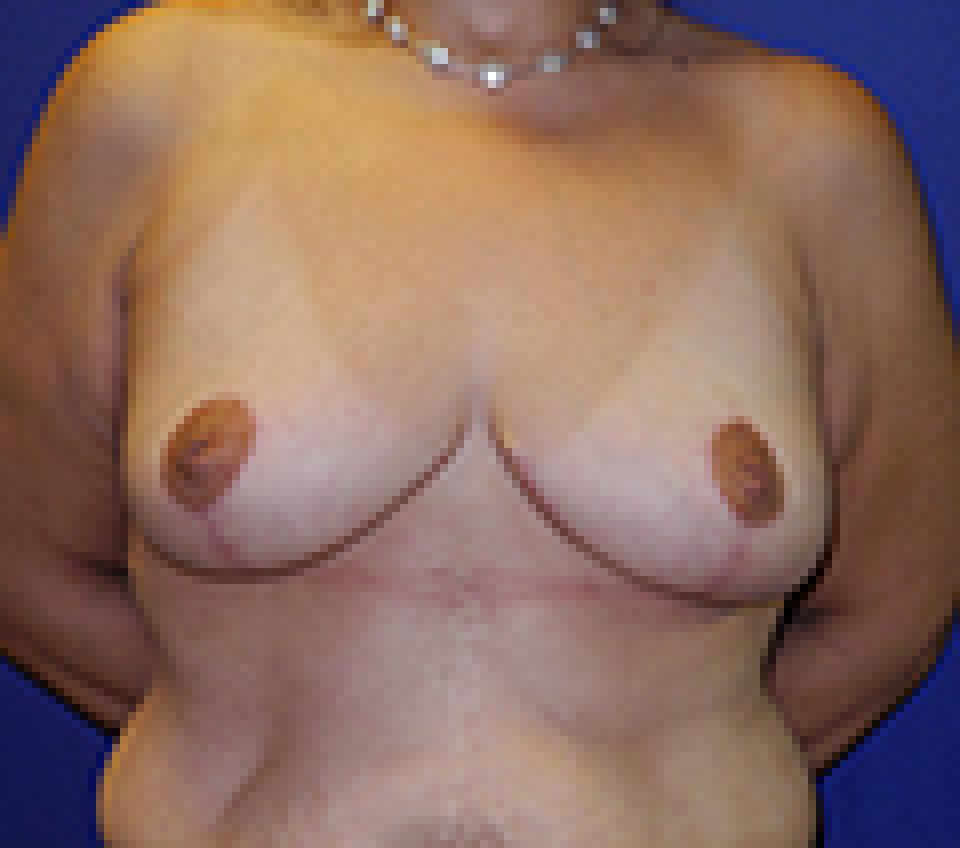 after
after
This 37 year old woman reached her plateau weight after losing 91 pounds following bariatric surgery. She had a breast lift or mastopexy using a technique which leaves behind scars in the shape of an “anchor.”
A breast lift or mastopexy is an operation which rearranges breast tissue so that the new breast shape is typically shorter and rounder. Unfortunately, patients who have lost a large amount of weight often do not have enough breast tissue remaining to rearrange into a naturally appearing breast. This woman was fortunate to have enough breast tissue after a 90 pound weight loss to achieve the breast shape that is visible in her post surgery photographs.
While an implant can provide the volume that is lacking after massive weight loss, the weight of the implant can also be very taxing on compromised skin, such as that which is typical after massive weight loss. Commercially available skin substitutes can provide the strength needed for successful use of implants in such cases.
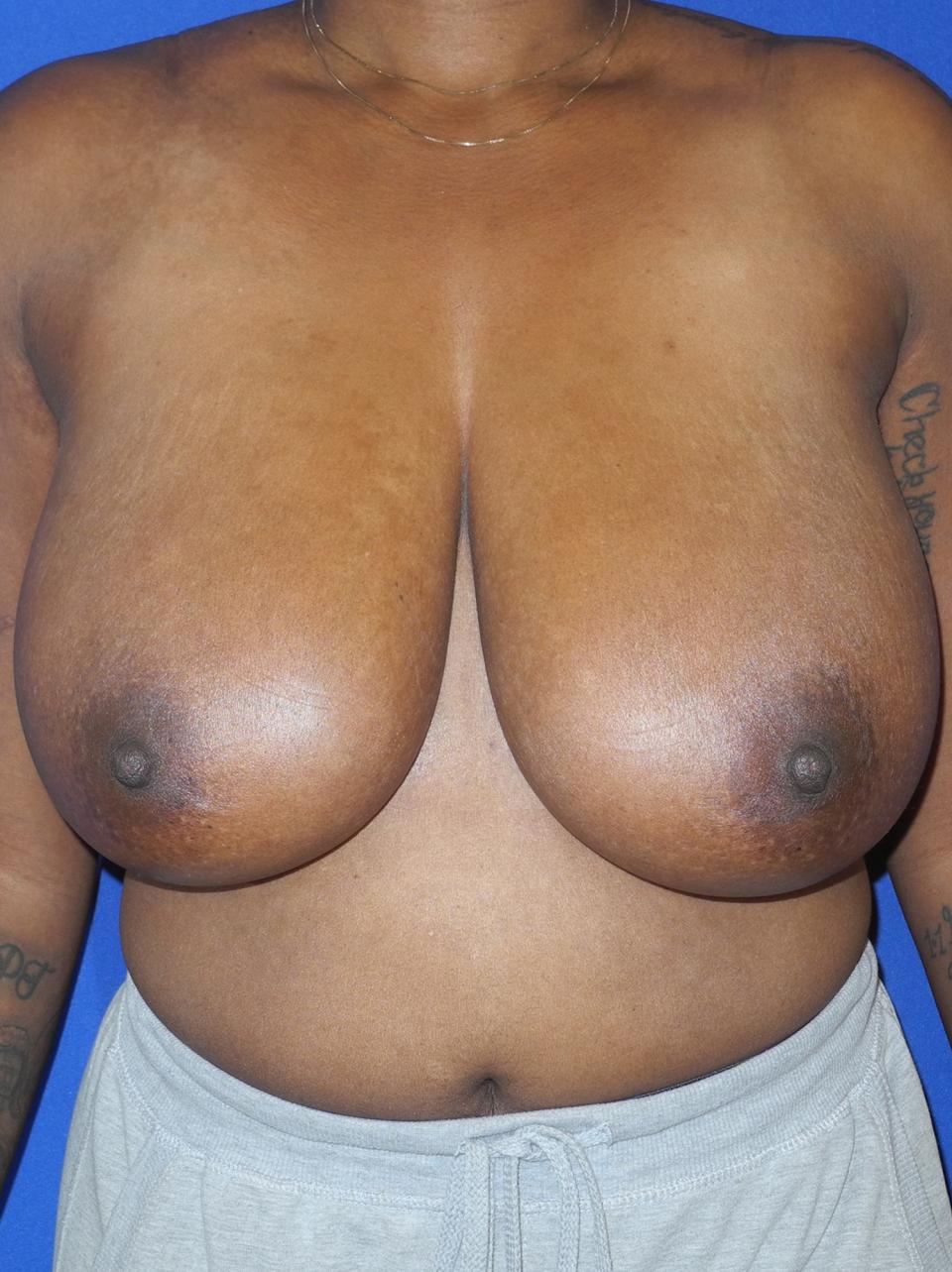 before
before
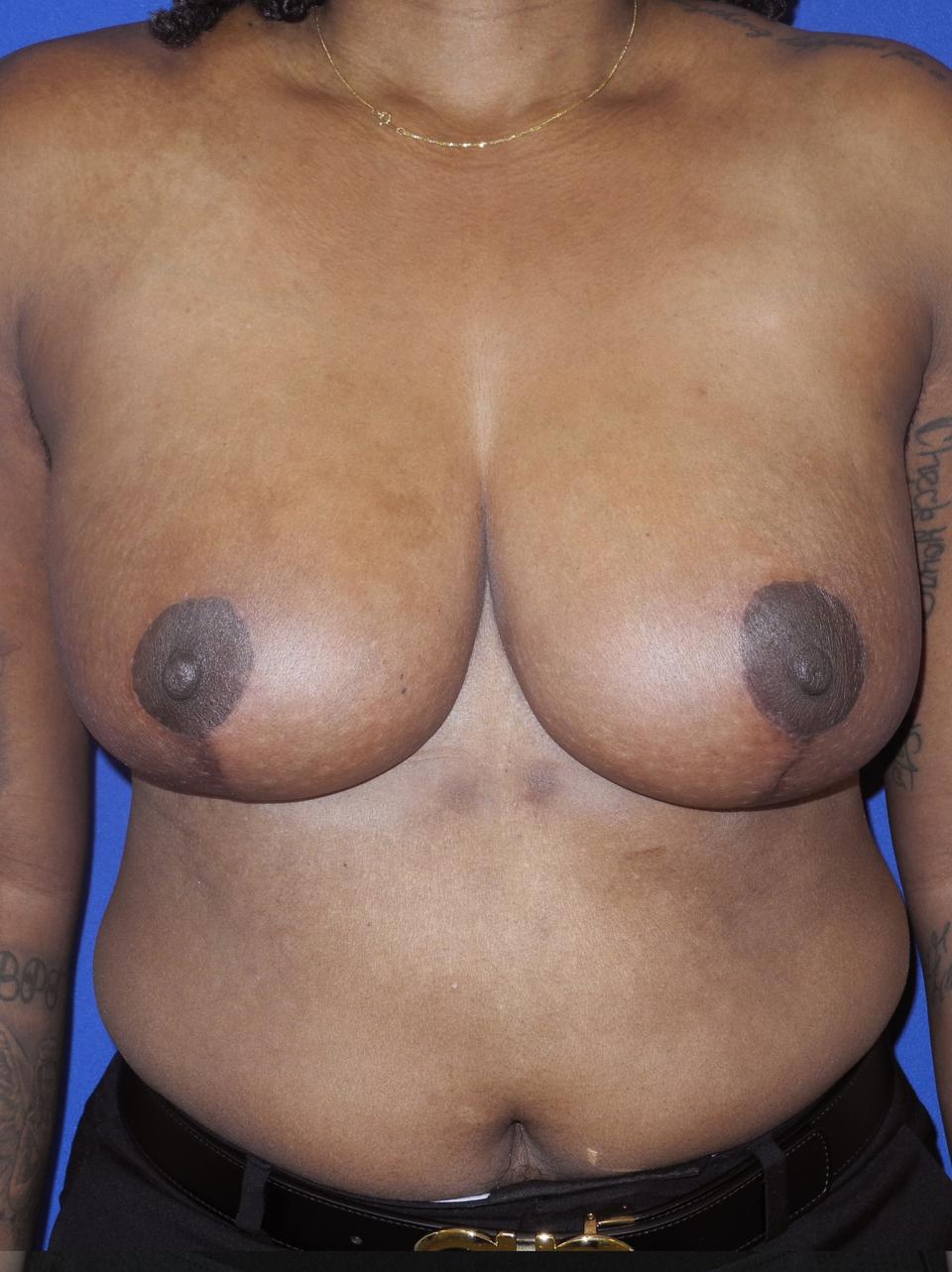 after
after
This individual suffered from gigantomastia and underwent a breast reduction in which almost three and a quarter pounds of weight was removed from the breasts.
The breast reduction was performed in a manner that so that the breasts were shortened in length and lifted. This photograph was taken at approximately four months following surgery. No liposuction was performed in this procedure.
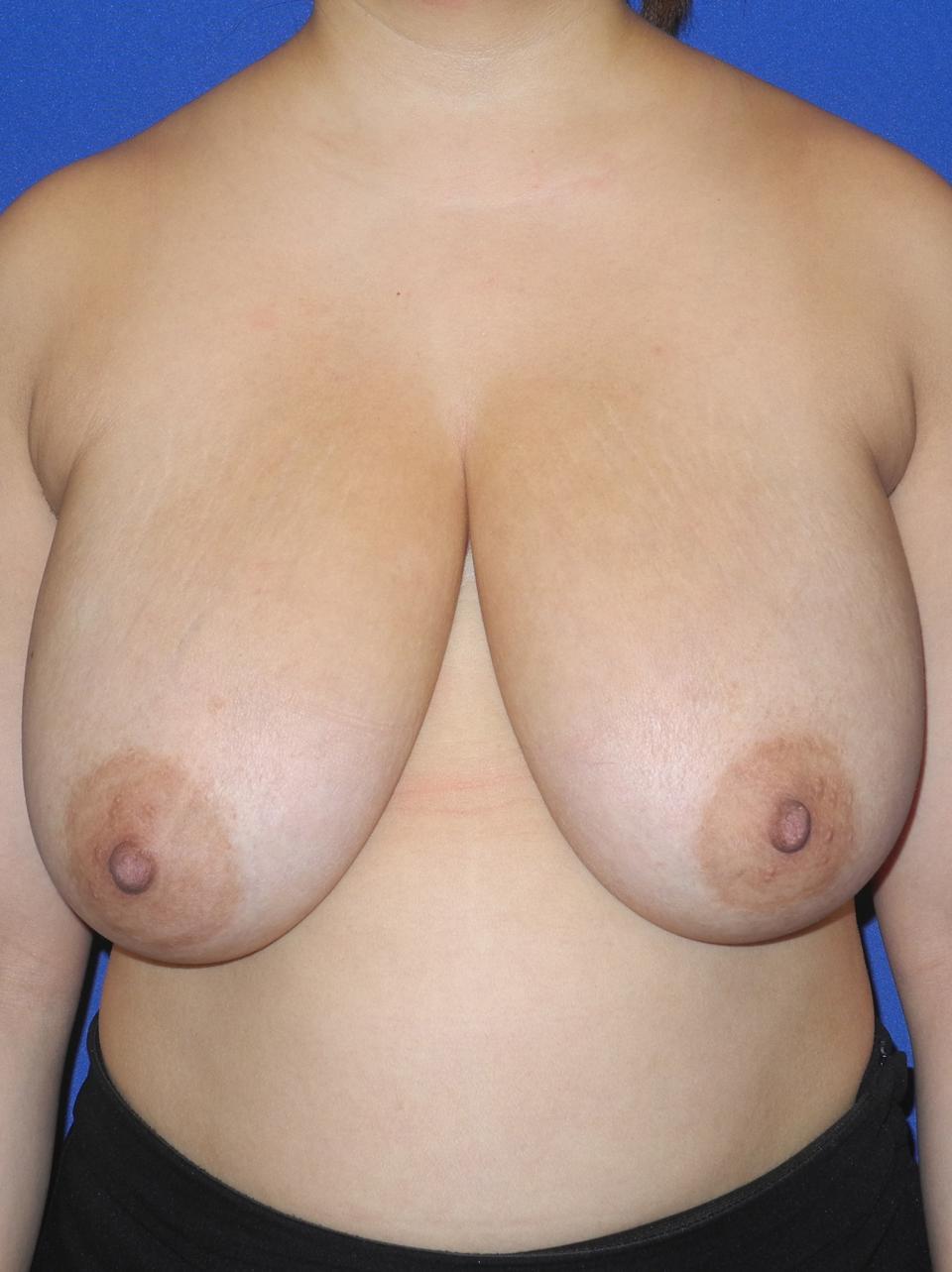 before
before
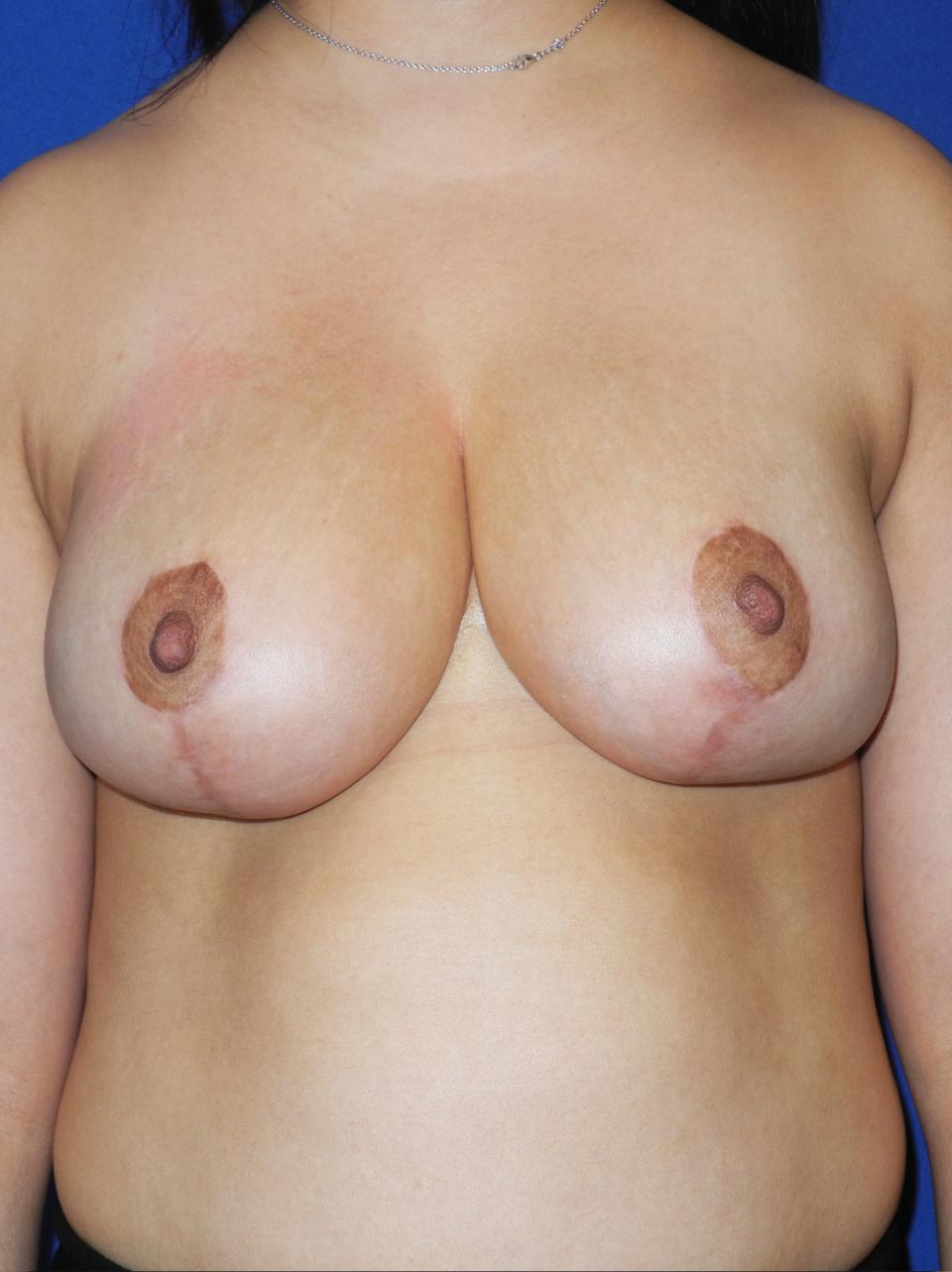 after
after
This individual suffered from large breasts, breast droop and extra tissue in the breast tail and armpit area. She underwent a breast reduction in which slightly more than two and a half pounds of weight was removed from the breasts.
With integrated breast and torso contouring, the breasts are not only shortened in length but then contoured with liposuction to give a rounder appearance. These techniques allow a breast reduction to look like a breast lift. This photograph was taken at approximately five months following surgery. Scars, while still visible, are still expected to mature and fade over the next year.
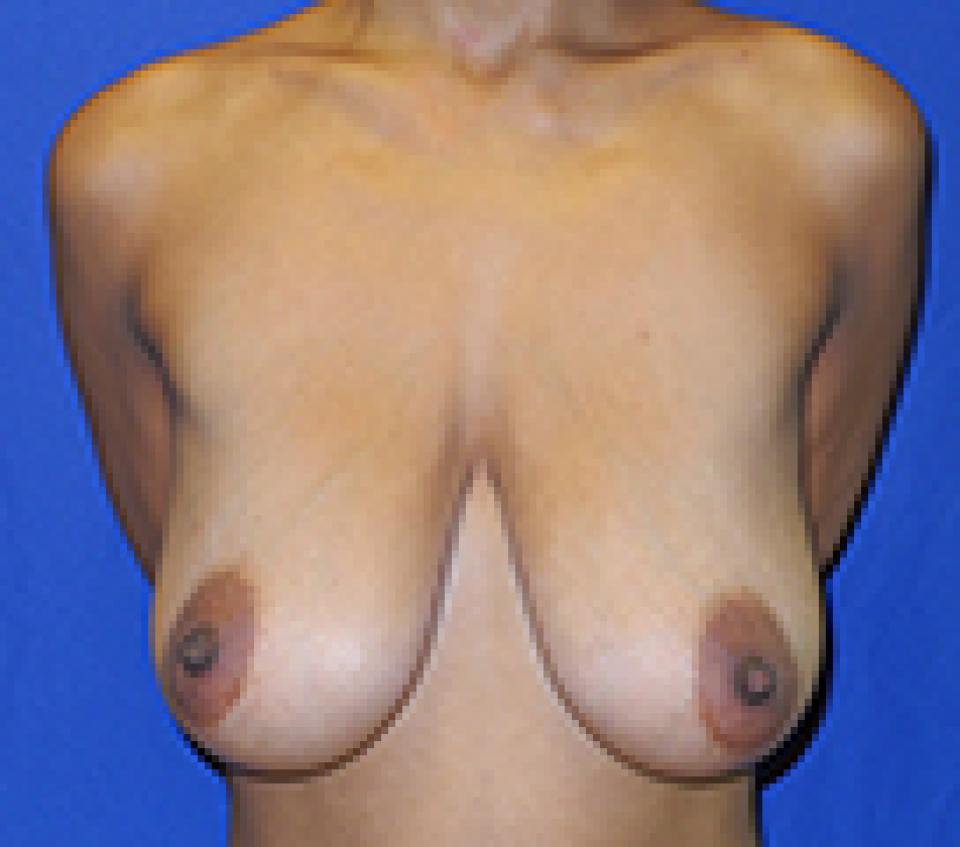 before
before
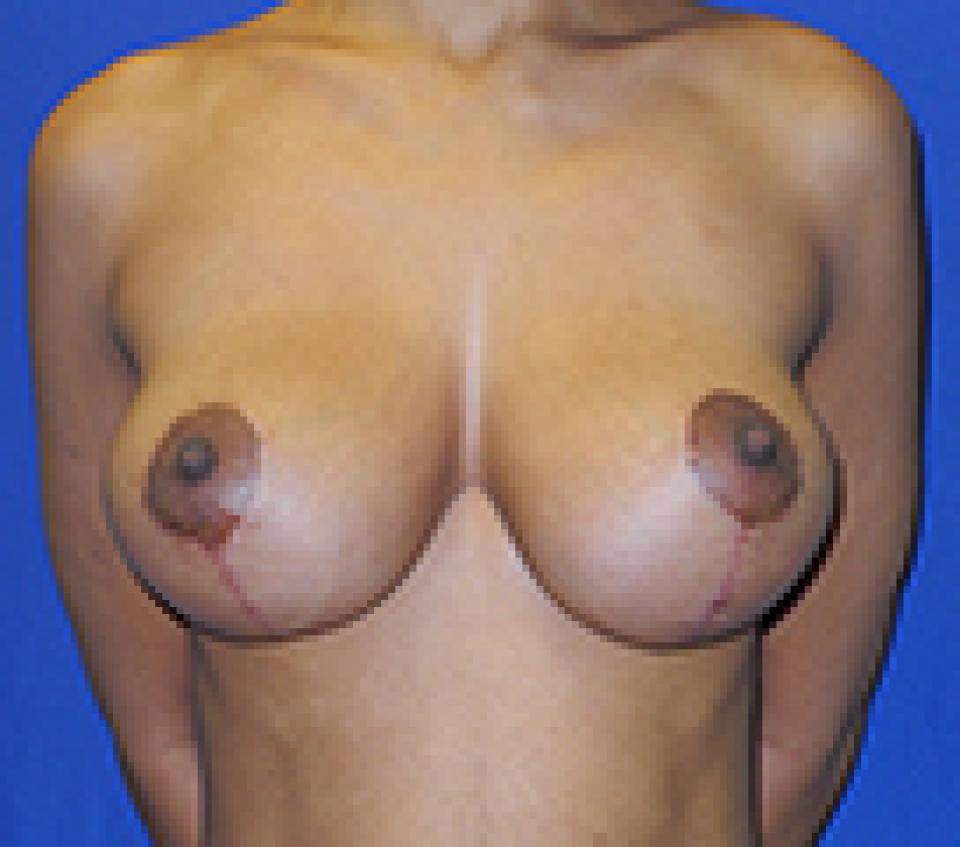 after
after
This 24 year old woman had a breast lift or mastopexy to correct sagging of her breasts that occurred as a result of changes related to pregnancy. I used a short scar breast lift or mastopexy technique which leaves behind scars shaped like a “lollipop.” Some breast lifts or mastopexies are performed using a technique that results in scars that look like an “anchor,” but I prefer to use this shorter scar technique because scars are never visible in the cleavage nor on the side of the body beneath the arm. This makes swimsuit selection much easier.
How the breasts will change as a result of pregnancy varies from one woman to the next. Some women’s breasts look very similar after pregnancy. Others change drastically in their appearance after even a single pregnancy.
This woman was fortunate to have enough breast tissue to rearrange into a relatively full and natural appearing breast without the need for an implant.
Skin elasticity, which refers to the ability of skin to “snap back” after being stretched, also varies from one woman to the next. In people who have poor elasticity, surgical results do not last as long. In such people, using an implant to replace volume can predispose that individual to an earlier recurrence of the initial problem because the implant has weight and taxes already compromised skin. Commercially available skin substitutes can provide the strength needed for successful use of implants in such cases. Use of such substitutes adds expense and complexity to the surgery, however.
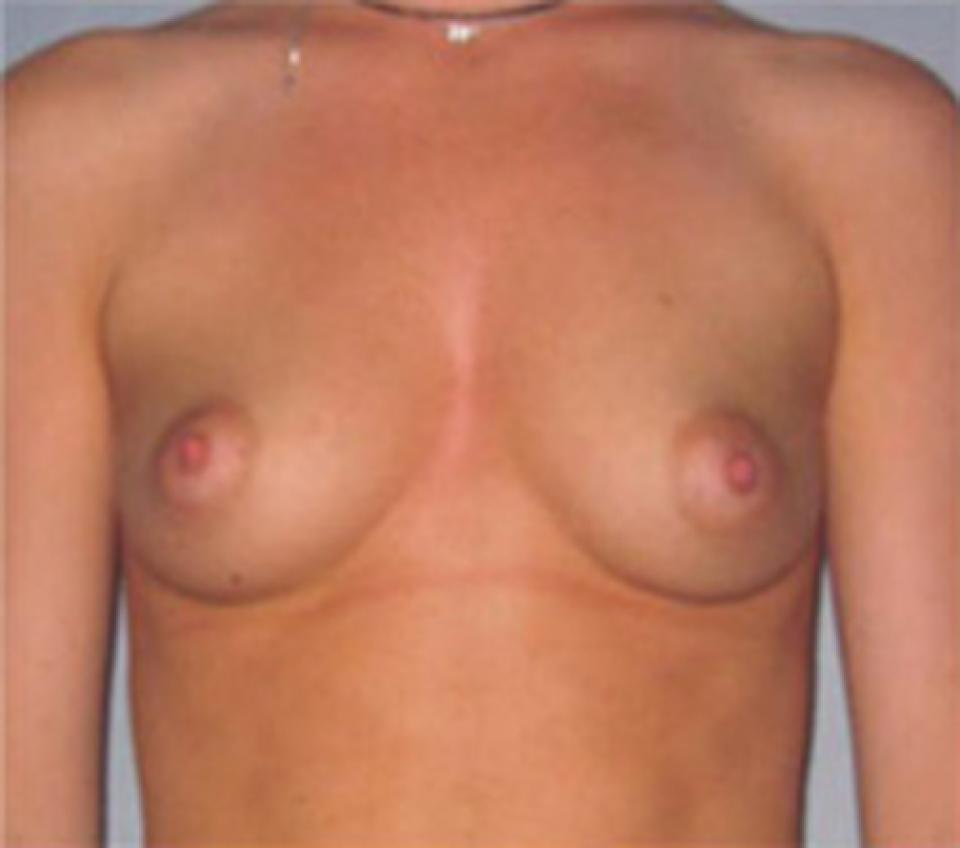 before
before
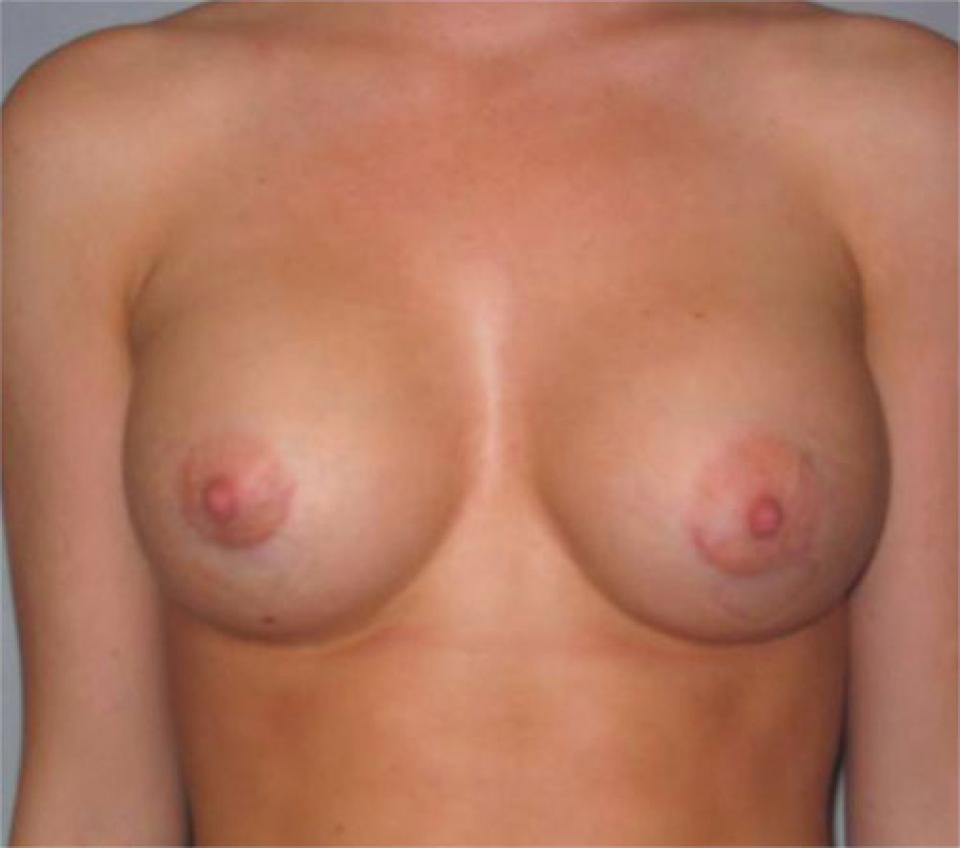 after
after
The following photographs depict an 18 year old woman who wished to have a larger and fuller bust. She underwent breast augmentation with smooth, round 330 cc saline implants.The implants were placed beneath her pectoralis muscles using incisions placed within the areolas.
The post-operative photographs depict her at approximately 6 months after her surgery. Peri-areolar incisions can heal nearly imperceptibly. They are hidden in virtually all fashions and swimwear. Dr. Belsley can place either saline or silicone implants through this type of incision.
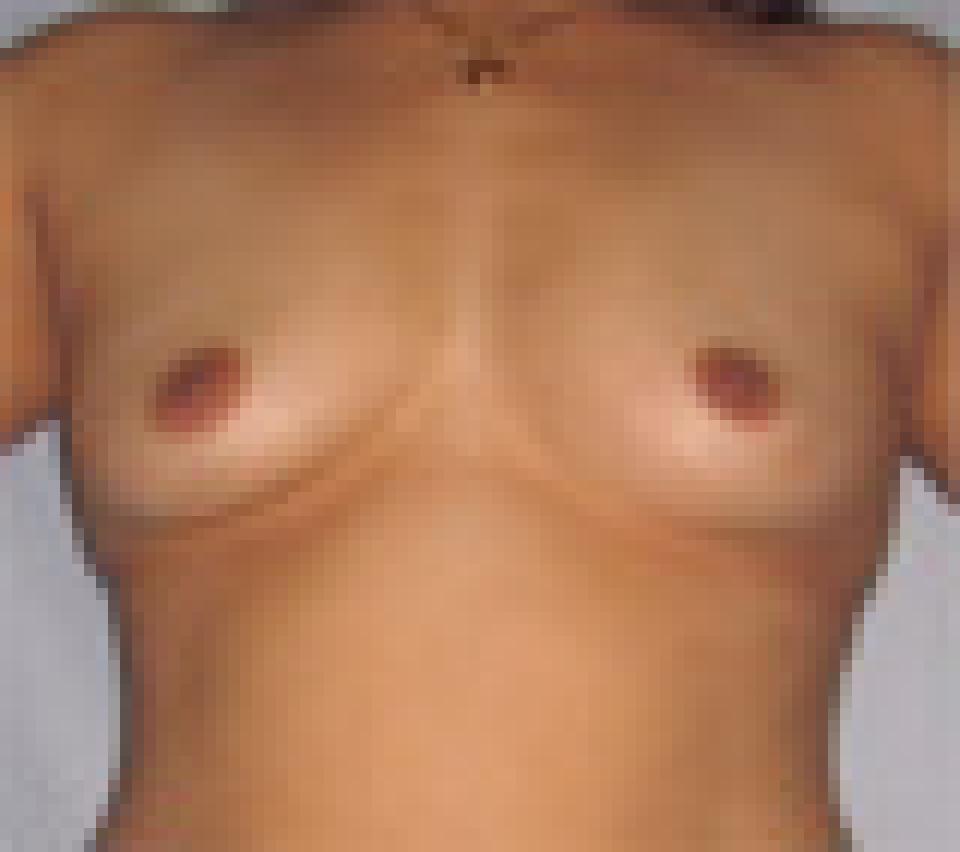 before
before
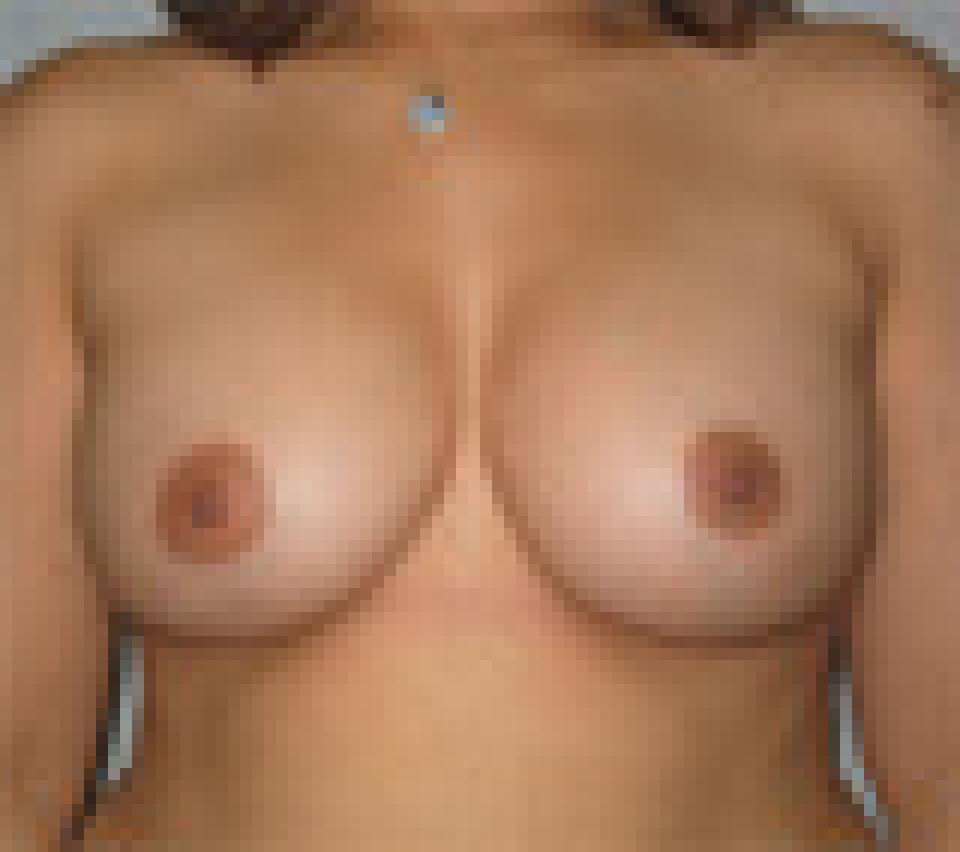 after
after
This case depicts a 40 year old woman who wished to have a larger and fuller bust.She underwent placement of 350 cc smooth, round saline implants. The implants were placed partiallly beneath her pectoralis muscles through an incision in the lower fold of the breast.
The post-operative photographs depict her at 3 months after surgery. The inframmamary fold incision is a particularly good option for women who have a well-developed breast fold before surgery. Because of this individual's anatomy, the incisions will be difficult to see at any angle.
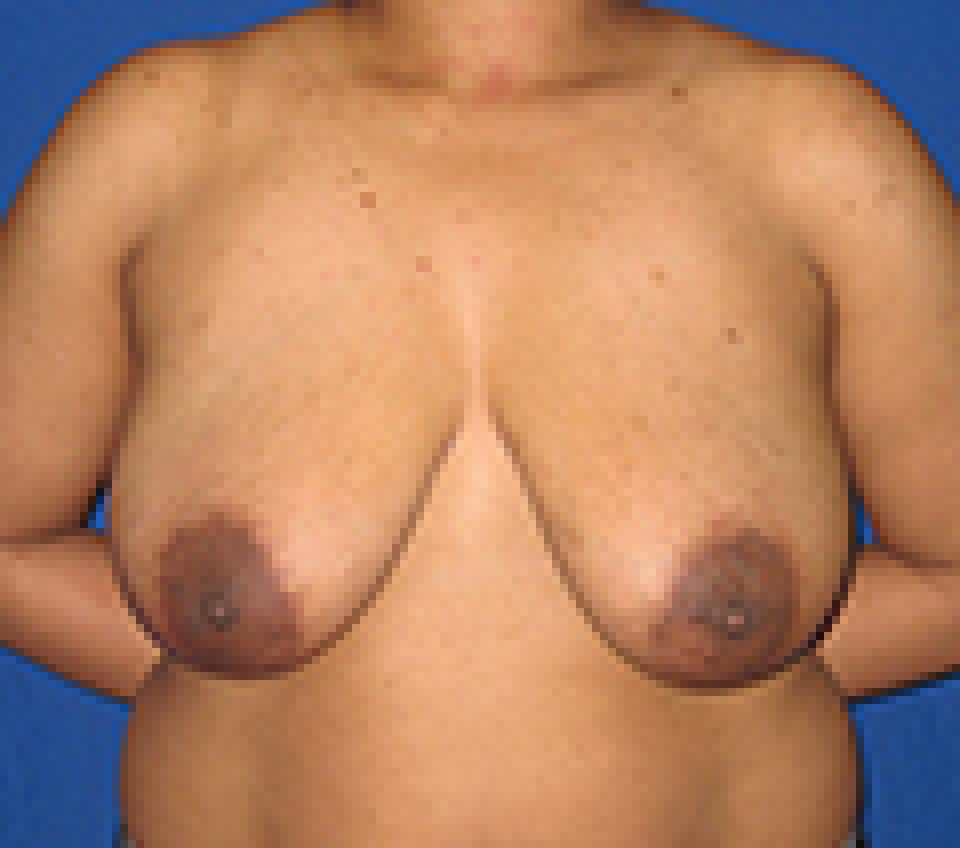 before
before
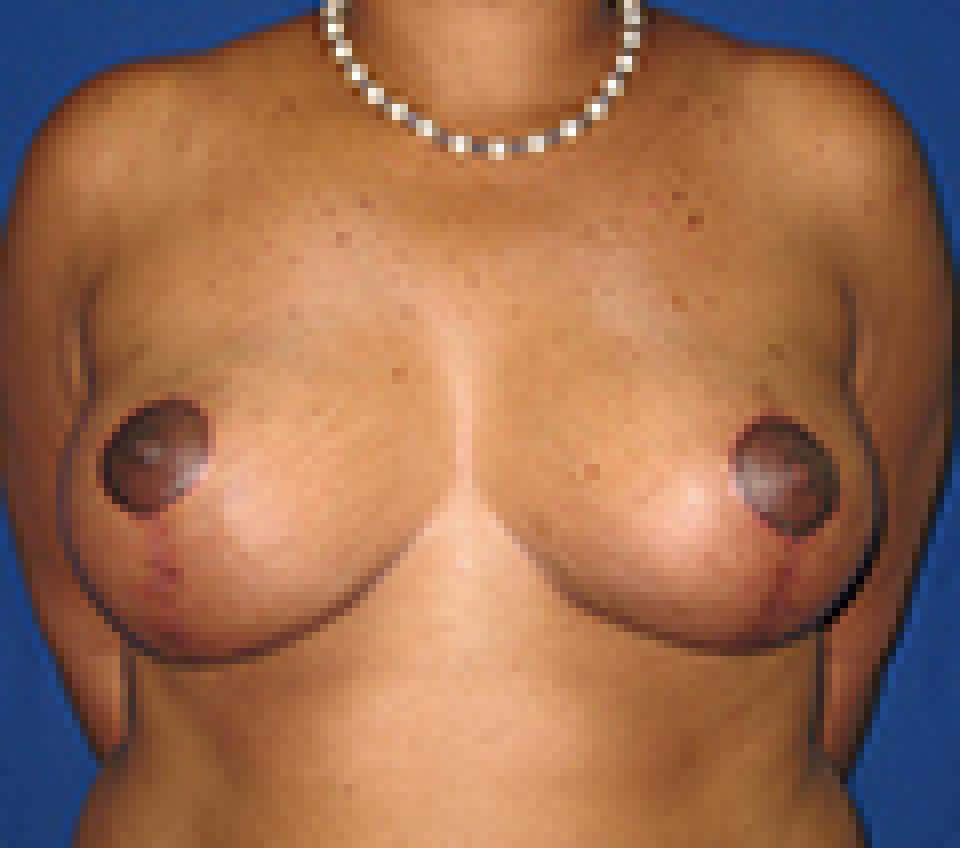 after
after
This 39 year old woman had a breast lift or mastopexy using a short scar technique which leaves behind scars in the shape of a “lollipop.” This technique, which I prefer to use, avoids any scars in the cleavage or on the side of the body beneath the arm. This makes swimsuit selection much easier if avoiding visible scars while wearing the swimsuit is a goal.
Candidates for a breast lift or mastopexy must have enough breast tissue to rearrange into a new breast shape that is typically shorter and rounder. If there is not enough breast tissue to rearrange and only excess skin, a situation that can occur when breasts involute following pregnancy, then an implant will be necessary to achieve a natural breast shape following surgery.
Questions Related to Inframammary Fold
Dr. Belsley's Philosophy of Breast Augmentation
When it comes to deciding what approximate breast size you wish to achieve, the best advice I can give you is that you should be guided by your physical frame. Indeed, you may in fact be limited by it. In my practice, I select implants based upon your chest measurements, the quality of your breast skin and the size of your breasts prior to surgery.
I perform breast augmentation through a peri-areolar or inframammary approach and I place that vast majority of implants at least partially beneath the pectoralis muscle. My patients are welcome to select either saline or silicone filled breast implants. Silicone filled implants can in some cases achieve a more natural feel and may be a particularly attractive option for women with less breast tissue prior to surgery.
More >>Dr. Belsley's Philosophy of Male Breast Reduction
Treatment for gynecomastia can be approached in several ways and is largely dependent upon the “type” of tissue in the chest that needs to be reduced. A physical examination is necessary to create a plan for treatment. Most of the time, I treat these individuals with a combination of ultrasonic liposuction and removal of glandular and breast tissue through a small incision on the border of the areola. Some individuals will be able to achieve excellent results with ultrasonic liposuction alone. Others, may require more extensive incisions. My goal is to give you a natural looking masculine shape that is well proportioned with the rest of your body using the shortest incision possible.
More >>